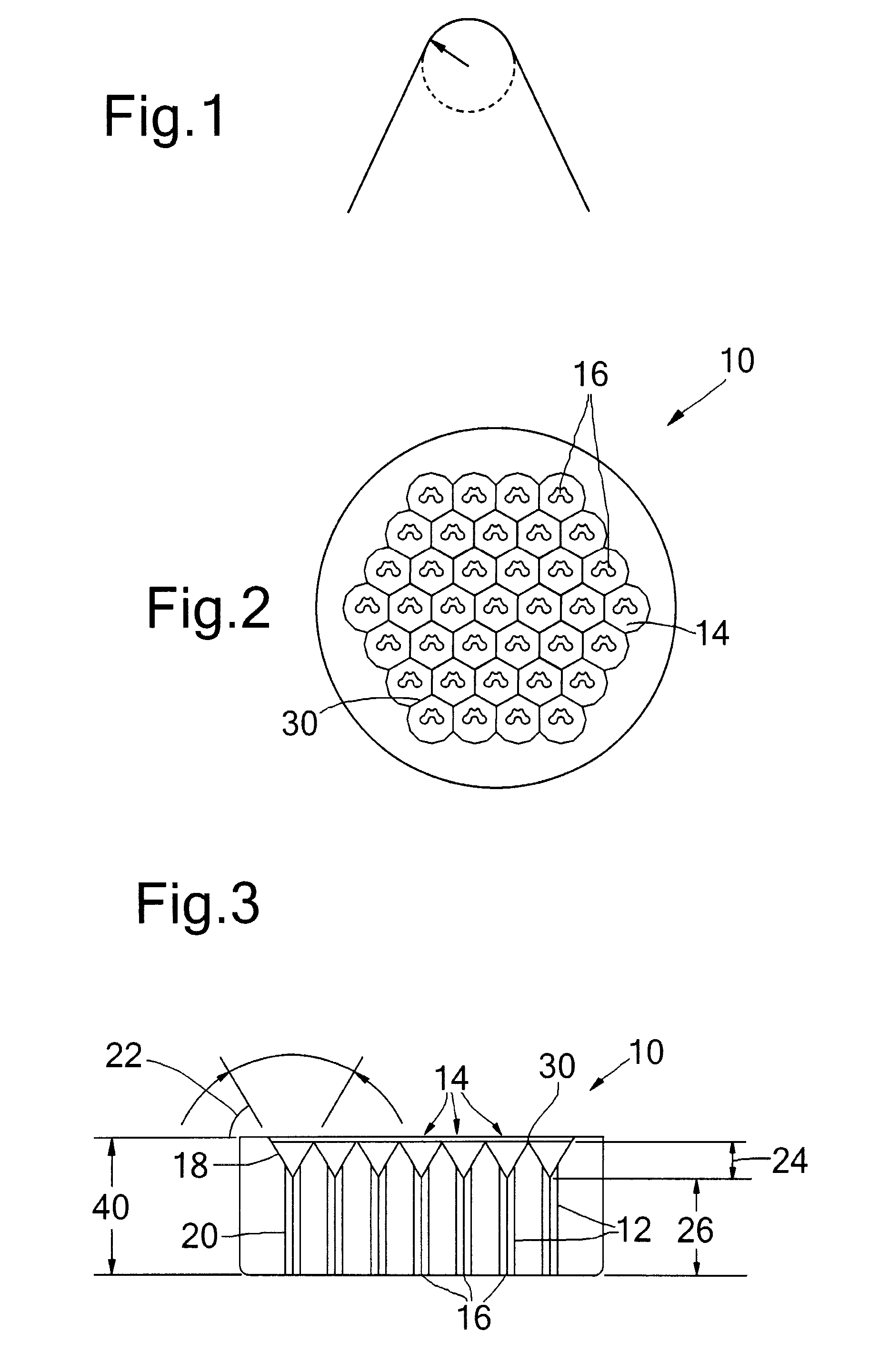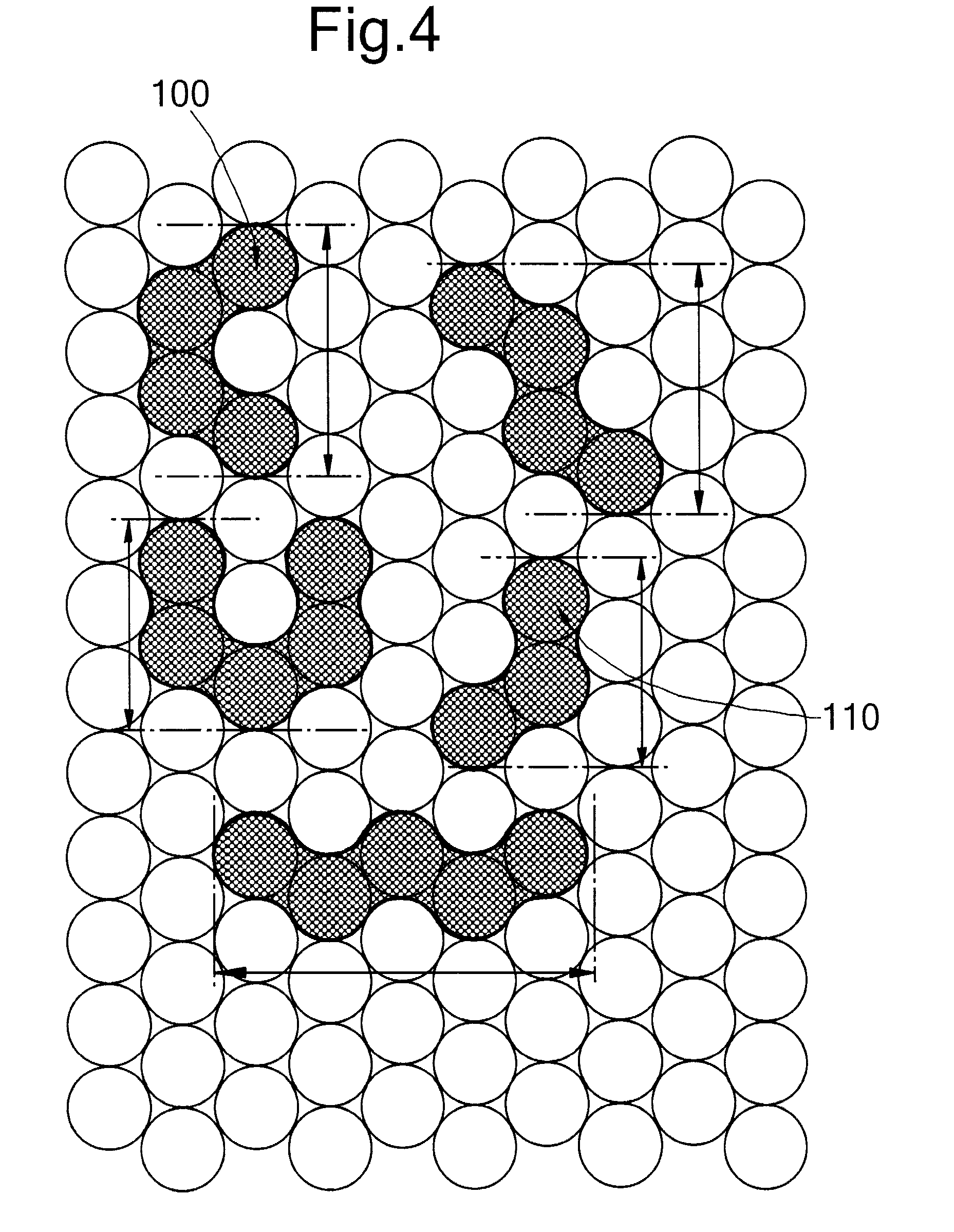Method of manufacturing a catalyst
a manufacturing method and catalyst technology, applied in the direction of catalyst activation/preparation, metal/metal-oxide/metal-hydroxide catalysts, moulding machines, etc., can solve the problem of particular but not exclusively suitable methods
- Summary
- Abstract
- Description
- Claims
- Application Information
AI Technical Summary
Benefits of technology
Problems solved by technology
Method used
Image
Examples
example 1
[0113]Embodiments of the present invention will now be described, by way of example only, with reference to the accompanying figures.
[0114]A die 10 is shown in FIGS. 2 & 3 and comprises a series of apertures 12 extending though the die from a first side to a second, opposite side. The die 10 may be provided in an outlet end of an extruder (not shown). Many such dies may be provided in a die plate connected to an extruder head of the extruder. In one embodiment there are twenty four such dies.
[0115]In accordance with the present invention, the apertures have an inlet 14 of a greater cross-sectional area than the outlet 16, as shown in FIGS. 2 and 3. Between the apertures at the inlet are rims 30. Each aperture comprises a cone-shaped portion 18 and a channel portion 20. The cone-shaped portions 18 increase the diameter of the inlets 14 of the apertures such that they are larger than the outlets 16. The length 24 of the cone-shaped portion may be around 3 mm and the length 26 of the c...
example 2
[0120]A clay-like paste was prepared containing titania, a cobalt and manganese source (cobalt / manganese co precipitated hydroxide) poly vinyl alcohol, citric acid and water.
[0121]In a first experiment, a portion of this paste was added to an extruder comprising, at the end thereof, four known dies with non-tapered apertures. The outlet of the apertures in the dies were of the CA-shape.
[0122]In a second experiment, another portion of the paste was added to an extruder comprising, at the end thereof, four dies in accordance with the present invention. The apertures had an inwardly tapered opening and a channel, the channel inlet and outlet having a substantially equal cross sectional area. The outlet of the apertures in the dies were of the CA-shape.
[0123]The extrudate production rate for the first portion of paste was found to be 10.8 kg / h. The extrudate production rate for the second portion of paste was found to be 18.3 kg / h. Thus a significant increase in production rate was foun...
PUM
| Property | Measurement | Unit |
|---|---|---|
| cross sectional area | aaaaa | aaaaa |
| radius | aaaaa | aaaaa |
| cross sectional area | aaaaa | aaaaa |
Abstract
Description
Claims
Application Information
 Login to View More
Login to View More - R&D
- Intellectual Property
- Life Sciences
- Materials
- Tech Scout
- Unparalleled Data Quality
- Higher Quality Content
- 60% Fewer Hallucinations
Browse by: Latest US Patents, China's latest patents, Technical Efficacy Thesaurus, Application Domain, Technology Topic, Popular Technical Reports.
© 2025 PatSnap. All rights reserved.Legal|Privacy policy|Modern Slavery Act Transparency Statement|Sitemap|About US| Contact US: help@patsnap.com



